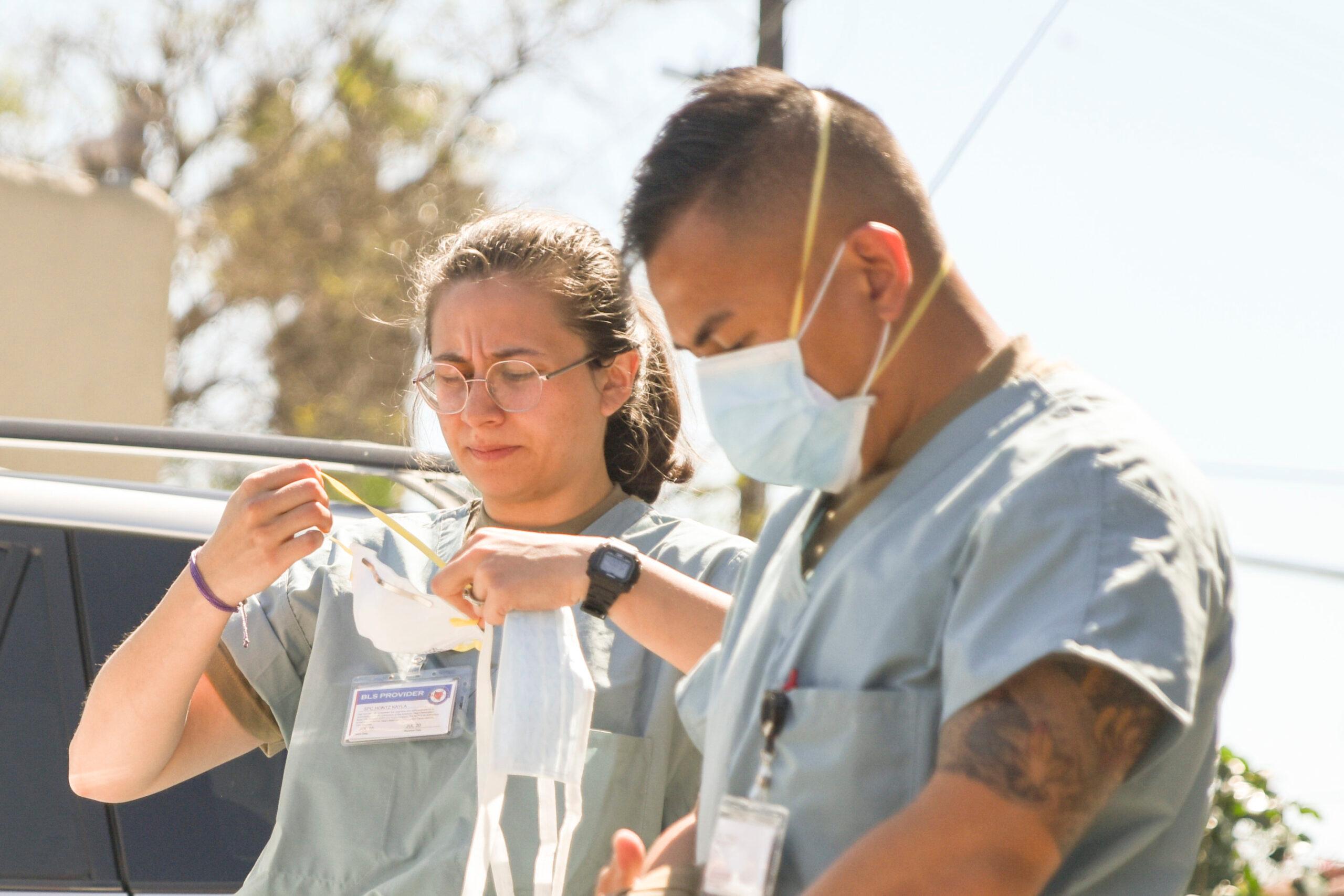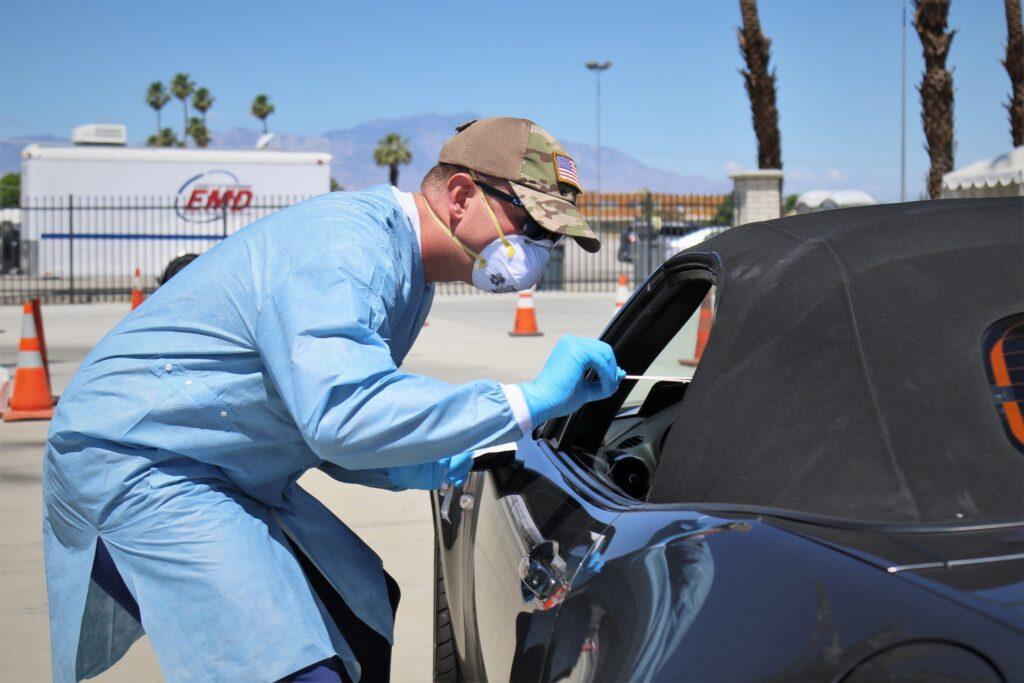
Members of the National Guard are deployed across the country to assist overwhelmed health departments and skilled nursing facilities hit hard by COVID-19.
In California — one of the hardest-hit states — members of the Guard also running mobile pop-up testing sites. California leads the nation in the number of confirmed COVID-19 cases.
California National Guard members are stationed in nursing homes performing a variety of tasks. Some are taking care of the residents' daily and medical needs. Others perform duties such as rearranging furniture and disinfecting facilities.
More than 200 medical personnel have responded. They've been in at least 25 nursing homes, two hospitals, and two other medical centers since the virus hit the Golden State.
Col. James Ward, the Joint Surgeon for the state National Guard, said health facilities can get strapped for staff fast.
"It's unexpected, a bunch of people get exposed, and then they call the state and say, 'Hey, we need help,'" he said.
That's where the National Guard comes in. He said the teams deployed at skilled nursing facilities are called rapid medical strike teams, with each consisting of around eight to 10 people.
Ward said that includes a variety of positions like doctors, physician assistants, nurses, physical therapists, respiratory therapists, and behavioral health and field medics.
Early in the pandemic, the California National Guard had as many as 13 rapid medical strike teams spread across the state as health care facilities scrambled to staff up against the virus. Now, as staffing demands have eased, it's down to five teams.
Ward said in general, the strike teams stay at locations for 72 hours to six days to get them over staffing crunches.
"Once they're stable, and they're good to go, we literally reset and we wait for the next mission," he said.
Sometimes those missions can go long. Capt. Serenity Holden oversees a team that runs mobile COVID-19 testing centers across the state. The mobile teams have done more than 20,000 tests so far.

Holden and her team isolate themselves at a hotel when they're not on duty. They've been living that way since the beginning of May.
"I was definitely not expecting this to be a long-term assignment," she said, laughing.
No one did. But now Holden is stationed in Sacramento County operating a busy drive-through testing site.
"There's been lines before we got there, and we've hit our maximum capacity within two hours," she said.
Her team also set up pop-up testing sites at more than 40 nursing homes, where she said they've been welcomed by many residents.
"They have been so locked away from everyone so that everyone seems so very happy to just to get some interaction with people," Holden said.
But she added that some nursing home managers have been concerned about having service members in uniform in their facility. Holden said some have asked if the troops will show up in tanks or with guns.
In Sacramento, the daughter of a long-term care facility resident told KOVR-TV that seeing the National Guard there made things "more intense." Some people were already on edge because of the National Guard's presence during recent protests.
Holden said her team of Guard members try to be less intimidating. Their uniforms, for example? "They're basically pajamas. We don't have a bunch of guns," she said.
This story was produced by the American Homefront Project, a public media collaboration that reports on American military life and veterans. Funding comes from the Corporation for Public Broadcasting.
Copyright 2020 North Carolina Public Radio – WUNC. To see more, visit North Carolina Public Radio – WUNC.

9(MDEyMDcxNjYwMDEzNzc2MTQzNDNiY2I3ZA004))








